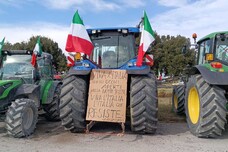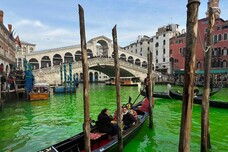New DNA studies on the garments and equipment of the Copper Age man called the Iceman or Oetzi have revealed his hat was made of bearskin and his quiver of deerskin, showing that the group he belonged to were not just herders of sheep and goats but also hunters.
The study led by Niall O'Sullivan of the European Academy in
Bolzano, where the 5,300-year-old Iceman mummy is stored,
appears in the latest number of Scientific Reports.
While most of Oetzi's clothes were made from domesticated
species such as sheep, cows and goats, the study of
mitochondrial DNA showed, the hat and quiver were the fruits of
mountain hunting for bears and roebuck.
Some of those animals were probably captured, the study
said.
Oetzi, the world's oldest wet mummy, has spawned a cottage
industry of studies on how he lived and died since he was found
in the Similaun glacier in the Oetz Valley between Italy and
Austria 25 years ago.
ALL RIGHTS RESERVED © Copyright ANSA











